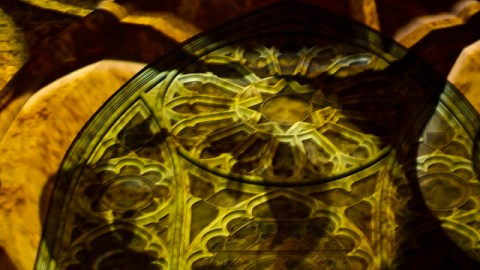Are Museums America’s Last Hope for Civil Discourse?

Any American who has steeled him or herself to watch the fur fly in the latest political fray over the debt ceiling knows that civil discourse is anything but civil. The idea that ideas can be brought out in an open forum for debate without someone getting insulted seems downright colonial (even though, truth be told, the Founding Fathers didn’t pull their punches either on the British or on one another). With so many windows seemingly slamming shut, is it possible that art museums might be the last hope for civil discourse in America? As Robin Cembalest recently wrote in ARTnews, “experts from outside the art world are converging to collaborate on projects that extend far beyond the galleries—and beyond conventional definitions of art.” Call it common sense or outlandish mission creep, museums as “think tanks” is fast becoming a reality, and perhaps a necessity.
If, as Samuel Johnson famously said, “Patriotism is the last refuge of a scoundrel,” are the fine arts the last refuge of a humanist liberal? Whereas art museums once confined themselves to collecting and presenting for the edification and education of the masses, some institutions now see that education extending beyond the typical boundaries of art. “If the 20th century was primarily about collecting, I believe the 21st is about programming,” MoMA director Glenn Lowry says in Cembalest’s piece. “Our goal is not so much to be the change agent, but rather, to create the kind of conversation that might lead at some future date to change by addressing critically important problems that engage specialists within the field as well as a more general public.” A recent program at the MoMA titled “Foreclosed: Rehousing the American Dream” seems out of place in a modern art museum, but in response to the U.S. foreclosure crisis of the past few years, Les Demoiselles d’Avignon just doesn’t seem that relevant, at least directly. Lowry, and others hosting similar forums, claim not to be “change agents,” but the very act of promoting the “conversation” in a civil manner is a refreshing change.
But shouldn’t museums stay out of the politics business? Is it possible to present these ideas without some liberal or conservative bias sneaking in and alienating someone? The New Museum’s Festival of Ideas for the New City held earlier this summer offered a veritable Smörgåsbord of social discourse from thinkers of every flavor. Just as Jeff Grantz’s The Equation of Time (shown above) lit up the exterior of the Basilica at Saint Patrick’s Cathedral during the festival in a fresh, new way, such attempts can shine a light on the shadowy corners normally avoided by the populace, and maybe, just maybe, enlighten those left in the dark, knowingly or not. Is that mission creep on the part of museums and their directors? Are they biting off more than they can chew, at the risk of being chewed up themselves by a public more than ready to turn against opinions they don’t hold?
Like Cembalest, I applaud these attempts. Before gathering to lynch me as a liberal, think about this fact: Ask any MoveOn.org or Tea Partier what they hate the most, and they’ll respond that it’s having their views not be heard. It’s not a liberal value to allow free speech, it’s an American value—one that we can all agree on. Museums, at least to me, seem the most natural place for this kind of discourse. Paintings and sculptures portray the history of human experience—what people have thought, believed, and fought for over the centuries. Those manifestations of critical thought about the world are the perfect backdrop for new assessments of the world shaped by verbal engagement. Stanley Fish admonished “activist” educators to “save the world on your own time” and get down to the “real business” of teaching. With these museums, I propose that the “real business” of art and culture (and education, too, by the way) is nothing less than saving the world, in this case by saving ourselves from the cacophony of shouting past one another by giving us a place to hear one another.
[Image:Jeff Grantz’s The Equation of Time lighting up the exterior of the Basilica at Saint Patrick’s Cathedral as part of Nuit Blanche New York’s Flash:Light installation during the New Museum’s Festival of Ideas for the New City.]





